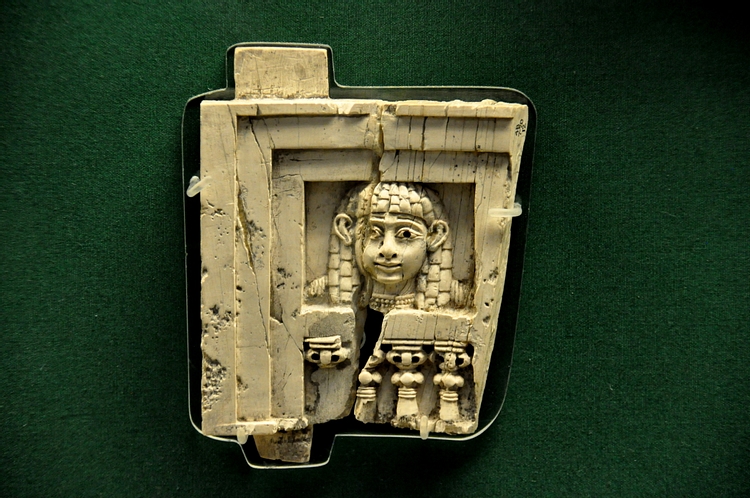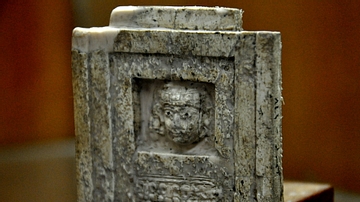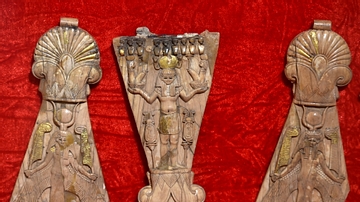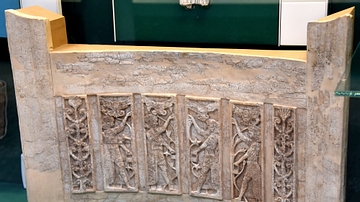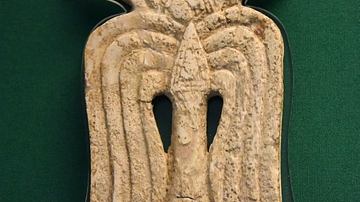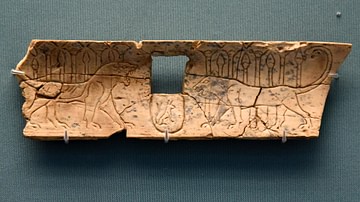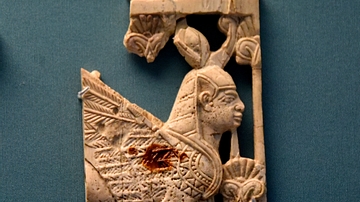Illustration
A woman looking out of a balustraded window was a popular theme in Phoenician art. This is possibly related to the goddess Astarte and ritual prostitution. This piece belongs to a large collection of the so-called "Nimrud ivories." These carved ivories decorated luxury furniture, boxes, and horse harnesses. Neo-Assyrian period, 9th-7th centuries BCE, from Nimrud (ancient Kalhu; Biblical Calah), Mesopotamia, Iraq. (The British Museum, London).
About the Author
Cite This Work
APA Style
Amin, O. S. M. (2014, July 26). Woman at the Window Ivory from Nimrud. World History Encyclopedia. Retrieved from https://www.worldhistory.org/image/2871/woman-at-the-window-ivory-from-nimrud/
Chicago Style
Amin, Osama Shukir Muhammed. "Woman at the Window Ivory from Nimrud." World History Encyclopedia. Last modified July 26, 2014. https://www.worldhistory.org/image/2871/woman-at-the-window-ivory-from-nimrud/.
MLA Style
Amin, Osama Shukir Muhammed. "Woman at the Window Ivory from Nimrud." World History Encyclopedia. World History Encyclopedia, 26 Jul 2014, https://www.worldhistory.org/image/2871/woman-at-the-window-ivory-from-nimrud/. Web. 09 Jul 2025.

